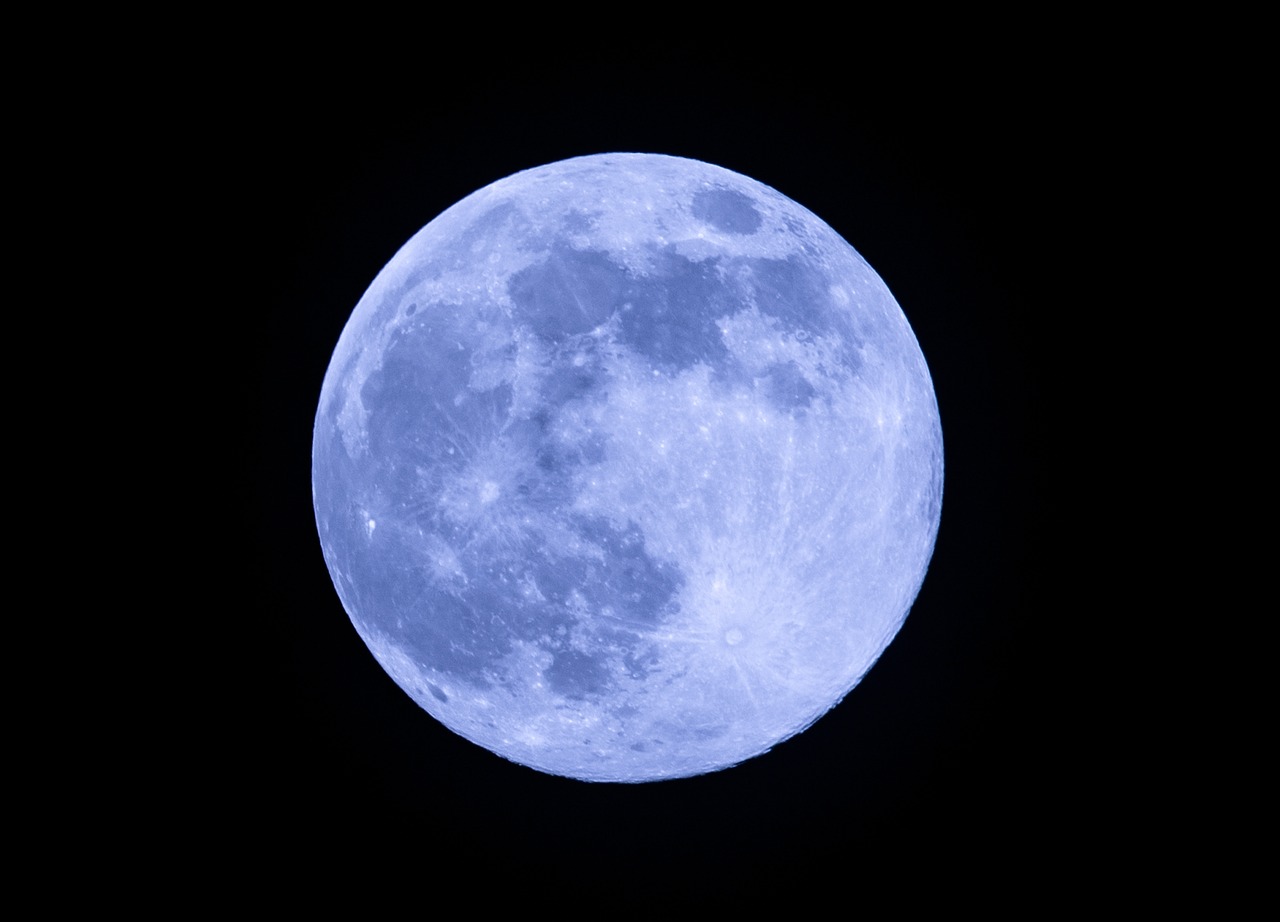Blue Moon: What is it, When is the Next One, When & How to See It

The Blue Moon is a celestial phenomenon that has captivated people’s imagination for centuries. It is often associated with rarity and intrigue, leading to various interpretations and myths. In this comprehensive guide, we will unravel the mystery behind the Blue Moon, explore its different definitions, and discover when the next one will occur. Additionally, we will provide tips on how to witness this mesmerizing event firsthand.
Understanding the Blue Moon
The Traditional Definition
The term “Blue Moon” traditionally referred to an additional full moon that occurs in a year. Typically, a year consists of 12 full moons, but occasionally, there is an extra one, making it 13 in total. The name “Blue Moon” is derived from the idea of something extraordinary or rare. However, it is important to note that the term has evolved over time, leading to different interpretations.
The Seasonal Definition
In the context of the Maine Farmer’s Almanac, the Blue Moon is the third full moon in a season that contains four full moons. This definition aims to correct the timing of the last month of a season, which would have otherwise occurred too early. According to this definition, a Blue Moon occurs every two to three years within the Metonic cycle, a 19-year lunar cycle.
Misinterpretation and Modern Usage
The modern understanding of the Blue Moon as the second full moon in a calendar month is a result of a misinterpretation of the Maine Farmer’s Almanac. In a March 1946 article in Sky & Telescope magazine, the author mistakenly concluded that a Blue Moon refers to the second full moon in a month. This interpretation gained popularity and is now widely accepted, even though it deviates from the original definition.

Moons in Different Colors
Rare Blue Moons
While Blue Moons are often associated with the color blue, it is important to clarify that true blue-colored moons are incredibly rare. The moon can appear blue when Earth’s atmosphere contains dust or smoke particles of a certain size – slightly wider than 900 nanometers. These particles efficiently scatter red light, causing the moon to appear blue. Factors such as wildfires can create the conditions necessary for a blue-colored moon to occur.
Atmospheric Conditions and Moon Color
Particles in the atmosphere, such as those from volcanic eruptions or forest fires, can influence the color of the moon. For example, the eruption of Krakatoa in 1883 caused the moon to appear blue for nearly two years. Similarly, the El Chichon volcano in Mexico in 1983 and Mount Pinatubo in 1991 also resulted in blue moons. These occurrences are rare and unrelated to the moon’s phases or the type of month.
Frequency of Blue Moons
Seasonal Blue Moons
Seasonal Blue Moons occur approximately every two to three years within the 19-year Metonic cycle. The Metonic cycle accounts for the slight difference in length between a tropical year (365.24 days) and the lunar cycle (29.53 days). As a result, there are 235 full moons in a 19-year period, allowing for seven additional full moons. These additional full moons create four-full-moon seasons, leading to the occurrence of Blue Moons.
Monthly Blue Moons
Monthly Blue Moons, defined as the second full moon in a calendar month, are relatively common compared to seasonal Blue Moons. The time between one full moon and the next is approximately the length of a calendar month. Therefore, when a month has two full moons, the second one is referred to as a Blue Moon. This phenomenon happens every two to three years, resulting in the occurrence of a Blue Moon by this definition.
Overlapping Blue Moons
In rare instances, a calendar year can have both a seasonal Blue Moon and a monthly Blue Moon. This occurs when there are 13 full moons between successive December solstices for a seasonal Blue Moon, and 13 full moons in one calendar year for a monthly Blue Moon. The next overlap will happen in the year 2048, with a monthly Blue Moon falling on January 31 and a seasonal Blue Moon on August 23.
Blue Moon in Folklore and Culture
Origins of the Term
The term “Blue Moon” can be traced back to an anti-clerical pamphlet published in 1528 by William Roy and Jerome Barlow. The pamphlet used the phrase “the moon is blue” to highlight the absurdity of requiring people to believe in false statements made by priests. This early usage of the term did not have any connection to the astronomical occurrence of a Blue Moon.
Modern Folklore
The modern understanding of the Blue Moon has been shaped by various sources, including the Maine Farmer’s Almanac and popular culture. Deborah Byrd, a writer and producer for StarDate radio series, popularized the definition of a Blue Moon as the second full moon in a calendar month. This definition was also featured in the board game Trivial Pursuit, further solidifying its place in popular folklore.
Predicting Blue Moons
Calculation of Frequency
The frequency of Blue Moons can be calculated by determining the time it takes for an extra synodic orbit of the moon to occur within a year. With a year consisting of approximately 365.2425 days and a synodic orbit taking 29.5309 days, there are roughly 12.368 synodic months in a year. To have an additional full month, it would take approximately 2.716 years or 2 years, 8 months, and 18 days for another Blue Moon to occur.
Blue Moons Between 2009 and 2037
The following are the dates of Blue Moons between 2009 and 2037, accounting for both seasonal and monthly definitions. Please note that these dates are based on UTC and may vary depending on different time zones.
Seasonal Blue Moons:
- November 21, 2010
- August 20, 2013
- May 21, 2016
- May 18, 2019
- August 22, 2021
Monthly Blue Moons:
- December 2 and 31, 2009
- January 1 and 30, 2010
- March 1 and 30, 2010
- August 2 and 31, 2012
- September 1 and 30, 2012
- July 2 and 31, 2015
- January 2 and 31, 2018
- March 2 and 31, 2018
- October 1 and 31, 2020
- November 1 and 30, 2020
- August 1 and 30, 2023
- December 2 and 31, 2028
- January 1 and 30, 2029
- January 1 and 31, 2037
- March 2 and 31, 2037
How to Observe a Blue Moon
Best Viewing Conditions
To witness a Blue Moon, it is essential to have clear skies and minimal light pollution. Find a location away from city lights, such as a rural area or a high vantage point. Check the weather forecast in advance to ensure optimal viewing conditions.
Lunar Calendar and Apps
Stay informed about upcoming Blue Moons by referring to a lunar calendar or using smartphone apps dedicated to tracking celestial events. These resources provide detailed information about the timing and visibility of Blue Moons in your location.
Binoculars and Telescopes
Enhance your viewing experience by using binoculars or telescopes to observe the details of the moon’s surface. These optical instruments can provide a closer look at the moon’s craters, mountains, and other fascinating features.
Photographing the Blue Moon
Capture the beauty of the Blue Moon by photographing it. Use a DSLR camera or a smartphone with manual camera settings to experiment with different exposures and compositions. Consider using a tripod to stabilize your camera and achieve sharper images.
Conclusion
The Blue Moon, a celestial phenomenon shrouded in myth and fascination, continues to captivate people’s imagination. Whether you adhere to the traditional definition or embrace the modern interpretation, witnessing a Blue Moon is a remarkable experience. Stay tuned to lunar calendars, plan your observation in optimal conditions, and prepare to be awed by the rare and enchanting sight of a Blue Moon illuminating the night sky.
Additional Information: The Blue Moon holds cultural significance in various traditions and is often associated with mystical beliefs and magical rituals. While these aspects are beyond the scope of scientific understanding, they contribute to the rich tapestry of human fascination with the celestial world.














